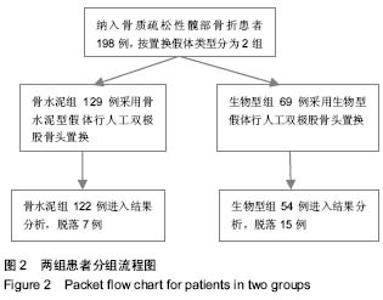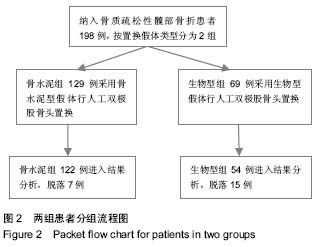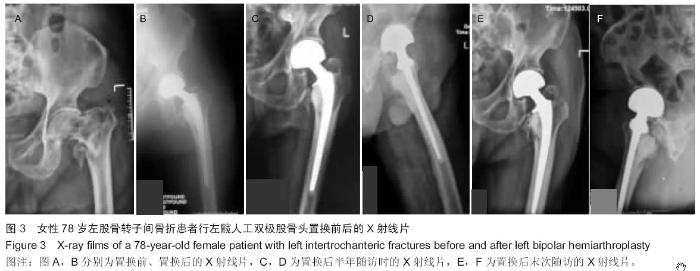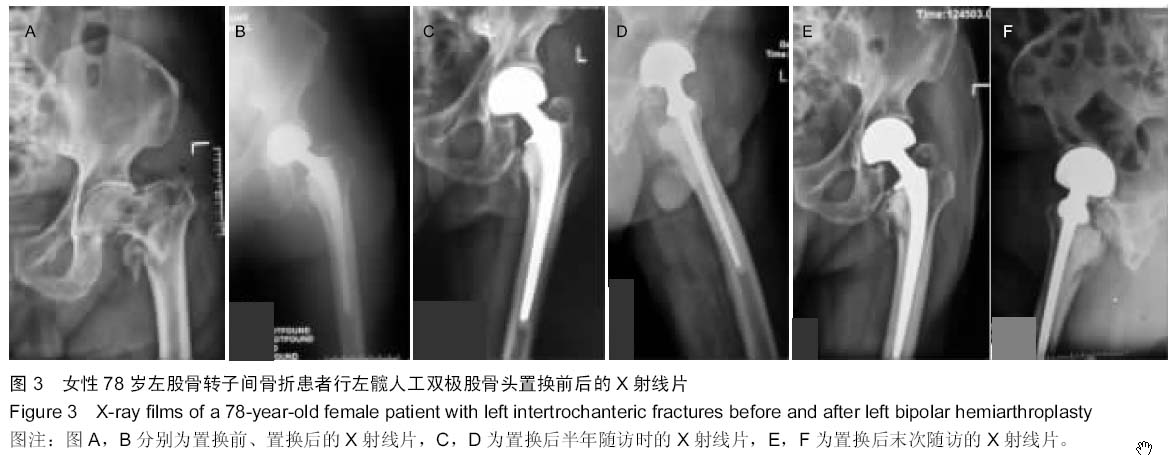| [1] Gullberg B,Johnell O,Kanis JA.World-wide projections for hip fracture. Osteoporos Int. 1997;7:407-413.
[2] 张建东,张天东,陶若奇,等.人工髋关节置换治疗老年股骨粗隆间骨折的疗效观察[J].中国骨质疏松杂志,2012,18(8): 738-740.
[3] 胡军,惠宇坚,朱辰蕾,等.人工髋关节置换与内固定治疗老年股骨颈骨折国内研究的Meta分析[J].中华创伤骨科杂志,2013, 15(5): 386-391.
[4] 邢建瑞,李艳,杨秀丽,等.人工股骨头置换治疗高龄不稳定股骨转子间骨折[J].创伤外科杂志,2012,14(4): 350-353.
[5] 汤小丰.人工股骨头置换治疗高龄不稳定股骨转子间骨折临床分析[J].医学信息,2015,28(16): 255-255.
[6] 王振东,樊强,李永德.人工股骨头置换术治疗高龄不稳定粗隆间骨折的疗效观察[J].中华损伤与修复杂志(电子版),2011,6(1): 74-78.
[7] 中华医学会骨质疏松和骨矿盐疾病分会.骨质疏松性骨折诊疗指南(讨论稿)[J].中华全科医师杂志,2006,5(8):458-459.
[8] 中华医学会骨科学分会.骨质疏松骨折诊疗指南[J].中华骨科杂志,2008,28(10):875-878.
[9] 施林军,张健,周爱国,等. Corail羟基磷灰石全涂层股骨柄假体全髋关节置换治疗高龄股骨颈骨折的早期疗效[J].重庆医科大学学报,2010,35(5):765-767.
[10] 关群,熊小江,唐进,等.人工关节置换治疗老年股骨转子间不稳定骨折[J].中华创伤杂志,2014,30(3):211-216.
[11] 郑得志,于建华,杨有庚,等.股骨转子间骨折动力髋螺钉内固定失败的危险因素[J].中华创伤杂志,2006,22(2):129-132.
[12] Kim WY, Han CH, Park JI, et al. Failure of intertrochanteric fracture fixation with a dynamic hip screw in relation to pre-operative fracture stability and osteoporosis. Int Orthop. 2001;25: 360-362.
[13] 施俊武,吴祝期,陈国华,等.膨胀髓内钉微创治疗股骨转子间骨折50例[J].中华创伤杂志,2009,25(2):148-150.
[14] 孙振辉,刘月驹,李衡.髋关节置换与内固定术治疗老年移位型股骨颈骨折术后再手术率和并发症的系统评价[J].中华创伤骨科杂志,2014,16(2):115-121.
[15] 赵文博,屠重棋,张晖,等.老年股骨颈骨折不同治疗方式比较的meta分析[J].中华外科杂志,2014,52(4):294-299.
[16] Baker RP, Squires B, Gargan MF, et al. Total hip arthroplasty and hemiarthroplasty in mobile, independent patients with a displaced intracapsular fracture of the femoral neck. A randomized, controlled trial. J Bone Joint Surg Am. 2006;88: 2583-2589.
[17] Miller D, Choksey A, Jones P, et al. Medium to long term results of the Exeter bipolar hemiarthroplasty for femoral neck fractures in active, independent patients. 5-13 year follow-up. Hip Int. 2008;18: 301-306.
[18] 王雷,刘庆宽,张元民,等.全髋与半髋置换治疗老年股骨颈骨折的比较[J].中国组织工程研究,2013,17(22):4013-4017.
[19] 王国柱,慕会杰,努尔兰,等.人工股骨头置换治疗高龄患者股骨转子间不稳定性骨折[J].中国组织工程研究,2013,17(48): 8337-8348.
[20] 敖沸,彭小龙,贾芝和,等.人工股骨头置换术治疗老年粉碎性股骨粗隆间骨折45例[J].中国老年学杂志,2012,32(21):4810-4811.
[21] 赵耀,汤健,李全利.老年骨质疏松性股骨颈骨折关节置换的选择:是人工股骨头还是全髋关节[J].中国组织工程研究,2012,16(9): 1692-1695.
[22] 张一,韩伟,李波,等.骨水泥型人工关节置换治疗高龄不稳定型股骨转子间骨折27例[J]. 中国组织工程研究与临床康复,2010, 14(4):661-664.
[23] Emerson RH Jr, Head WC, Emerson CB, et al. A comparison of cemented and cementless titanium femoral components used for primary total hip arthroplasty: a radiographic and survivorship study. J Arthroplasty. 2002;17: 584-591.
[24] Kim YH, Oh SH, Kim JS, et al. Contemporary total hip arthroplasty with and without cement in patients with osteonecrosis of the femoral head. J Bone Joint Surg Am. 2003;85: 675-681.
[25] Luo X, He S, Li Z, et al. Systematic review of cemented versus uncemented hemia-rthroplasty for displaced femoral neck fractures in olderpatients. Arch Orthop Trauma Surg. 2012;132:455-463. |









